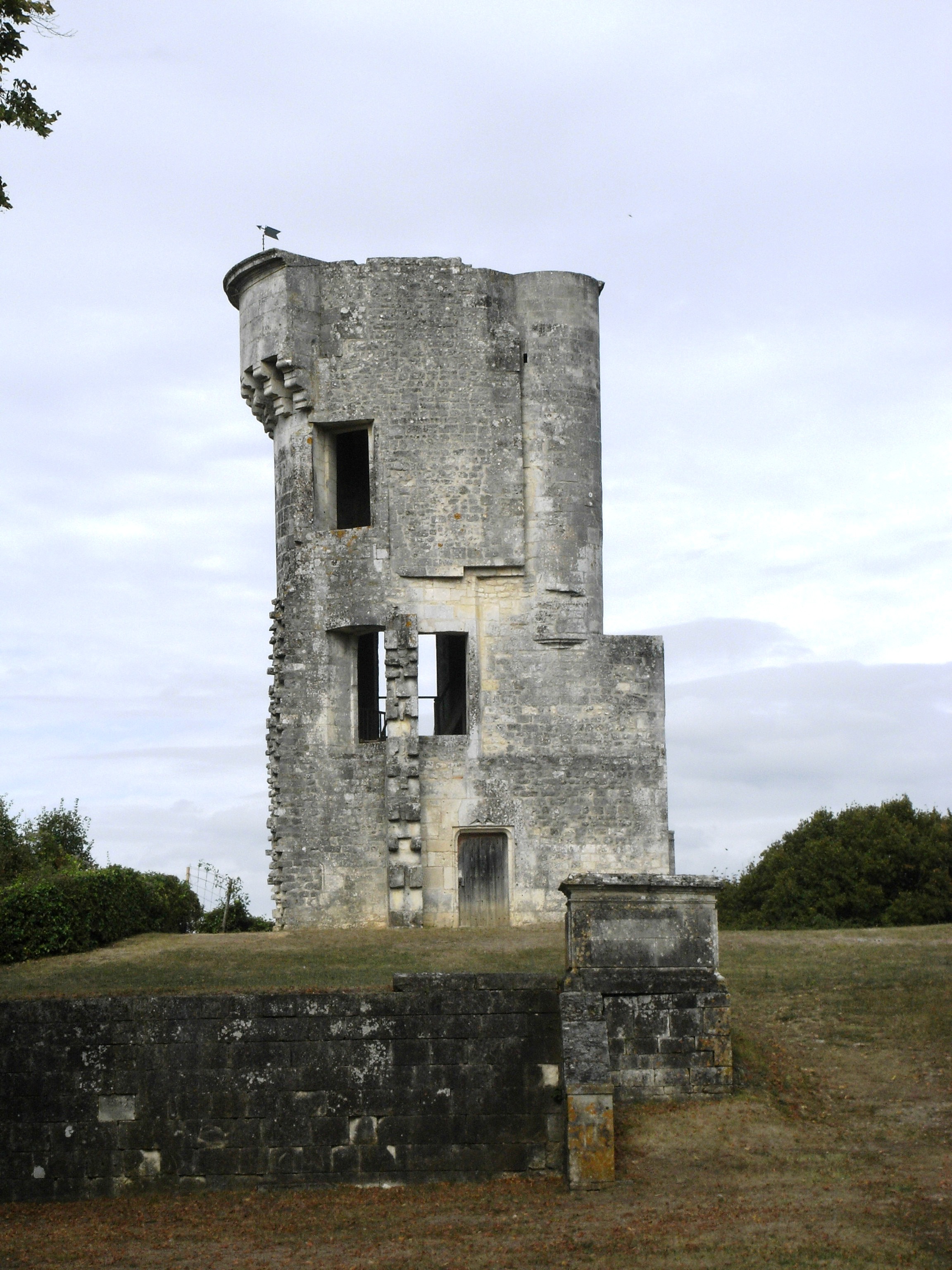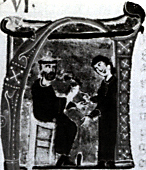|
Monk Of Montaudon
The (Lo) Monge de Montaudon (meaning "monk of Montaudon") (fl. 1193–1210Gaunt and Kay, Appendix I, 287.), born Pèire de Vic, was a nobleman, monk, and troubadour from the Auvergne, born at the castle of Vic-sur-Cère near Aurillac, where he became a Benedictine monk around 1180.Aubrey, 17. According to his '' vida'', he composed "couplets while he was in the monastery and ''sirventes'' on subjects that were popular in the region."Egan, 70. Life The Monge requested and received the priory of Montaudon from the abbot of Aurillac. Montaudon may be identified with Montauban or perhaps with a ''Mons Odonis'' southeast of Clermont. He became so popular with local nobility that he was taken from his monastery to serve them, receiving honours and gifts in return. In this way he greatly improved the state of his priorate and, upon his request, was released from his monastic vocation by his abbot to follow Alfonso II of Aragon, whose vassal the viscount of Carlat and lord of Vic was. ... [...More Info...] [...Related Items...] OR: [Wikipedia] [Google] [Baidu] |
Languedoc
The Province of Languedoc (, , ; ) is a former province of France. Most of its territory is now contained in the modern-day region of Occitanie in Southern France. Its capital city was Toulouse. It had an area of approximately . History The Roman province of Gallia Narbonensis fell to the Visigothic Kingdom from the 5th to the 8th centuries. Occupied briefly by the Emirate of Córdoba between 719 and 759, it was conquered and incorporated into the Kingdom of the Franks by Pepin the Short in 759 following the Siege of Narbonne. The term Languedoc originated to describe a cultural region that was not necessarily politically unified. After the decline of the Carolingian Empire political rule fragmented into small territorial divisions. King John of England lost his holdings in northern Languedoc to Philip II of France. He visited the region in 1214 seeking the restoration of those lands. In the 13th century, the See of Rome challenged the area's spiritual beliefs, ... [...More Info...] [...Related Items...] OR: [Wikipedia] [Google] [Baidu] |
Enueg
The , or (; "complaint, vexation") is a genre of lyric poetry practised by the troubadours. Somewhat similar to the , the was generally a litany of complaints, few of them connect topically to the others. The word "" appears frequently in such works. The Monge de Montaudon was the first master of the . Raymond Hill defined an as "the enumeration in epigrammatic style of a series of vexatious things". He finds the genre continued in later medieval Catalan, Italian, French, and Galician-Portuguese literature. Ernest Wilkins considered William Shakespeare's Sonnet LXVI an example of an English , citing also example from Petrarch. Richard Levin considers the anonymous English poem beginning "Whear giltles men ar greuously opreste" to be an . Sources *Chambers, Frank M. ''An Introduction to Old Provençal Versification''. Diane, 1985. . *Hill, Raymond Thompson"The ''Enueg''" ''Periodical of the Modern Languages Association'', 27 (1912), pp. 265–96. *Hill, Raymond Thompson"The ... [...More Info...] [...Related Items...] OR: [Wikipedia] [Google] [Baidu] |
Canso (song)
The ''canso'' or ''canson'' or ''canzo'' () was a song style used by the troubadours. It was, by far, the most common genre used, especially by early troubadours, and only in the second half of the 13th century was its dominance challenged by a growing number of poets writing ''coblas esparsas''. The ''canso'' became, in Old French, the ''grand chant'' and, in Italian, the ''canzone''. Structure A ''canso'' usually consists of three parts. The first stanza is the ''exordium'', where the composer explains his purpose. The main body of the song occurs in the following stanzas, and usually draw out a variety of relationships with the ''exordium''; formally, aside from the ''envoi''(''s''), which are not always present, a ''canso'' is made of stanzas all having the same sequence of verses, in the sense that each verse has the same number of metrical syllables. This makes it possible to use the same melody for every stanza. The sequence can be extremely simple, as in ''Can vei la l ... [...More Info...] [...Related Items...] OR: [Wikipedia] [Google] [Baidu] |
Duchy Of Austria
The Duchy of Austria (; ) was a medieval principality of the Holy Roman Empire, established in 1156 by the '' Privilegium Minus'', when the Margraviate of Austria ('' Ostarrîchi'') was detached from Bavaria and elevated to a duchy in its own right. After the ruling dukes of the House of Babenberg became extinct in male line, there was as much as three decades of rivalry on inheritance and rulership, until the German king Rudolf I took over the dominion as the first monarch of the Habsburg dynasty in 1276. Thereafter, Austria became the patrimony and ancestral homeland of the dynasty and the nucleus of the Habsburg monarchy. In 1453, the archducal title of the Austrian rulers, invented by Duke Rudolf IV in the forged '' Privilegium Maius'' of 1359, was officially acknowledged by the Habsburg emperor Frederick III. Geography Initially, the duchy was comparatively small in area, roughly comprising the modern-day Austrian state of Lower Austria. As a former border march, it ... [...More Info...] [...Related Items...] OR: [Wikipedia] [Google] [Baidu] |
Richard I Of England
Richard I (8 September 1157 – 6 April 1199), known as Richard the Lionheart or Richard Cœur de Lion () because of his reputation as a great military leader and warrior, was King of England from 1189 until his death in 1199. He also ruled as Duke of Normandy, Duke of Aquitaine, Aquitaine, and Duchy of Gascony, Gascony; Lord of Cyprus in the Middle Ages, Cyprus; Count of Poitiers, Counts and dukes of Anjou, Anjou, Count of Maine, Maine, and Count of Nantes, Nantes; and was overlord of Brittany at various times during the same period. He was the third of five sons of Henry II of England and Eleanor of Aquitaine and was therefore not expected to become king, but his two elder brothers predeceased their father. By the age of 16, Richard had taken command of his own army, putting down rebellions in Poitou against his father. Richard was an important Christian commander during the Third Crusade, leading the campaign after the departure of Philip II of France and achieving sev ... [...More Info...] [...Related Items...] OR: [Wikipedia] [Google] [Baidu] |
Villefranche-de-Conflent
Villefranche-de-Conflent (; ) is historically a town in the Conflent region of Catalonia, and now a commune in the Pyrénées-Orientales department in southern France. It is a member of Les Plus Beaux Villages de France (The Most Beautiful Villages of France) Association. Geography Villefranche-de-Conflent is located in the canton of Les Pyrénées catalanes and in the arrondissement of Prades. The town's confined site, at about 440 m above sea level, is relatively level ground surrounded by * the northeast-flowing river Têt (on the town's west and north), * the Cady, which flows north to empty into the Têt (on the east), and * a peak (at nearly 800 m), less than 800 m away (on the south). Transport ;Roads The N116 from Perpignan on the Mediterranean passes, as a two-lane highway, between the southern town wall and an embankment cut into the high ground to the south; this route continues west into the adjacent Cerdagne region. ;Train The town's train station st ... [...More Info...] [...Related Items...] OR: [Wikipedia] [Google] [Baidu] |
County Of Roussillon
The County of Roussillon (, , ) was one of the Catalan counties in the Marca Hispanica during the Middle Ages. The rulers of the county were the counts of Roussillon, whose interests lay both north and south of the Pyrenees. The historic county's lands today lie within the borders of France. Visigothic county There was a Visigothic county around the city of Ruscino in the 6th and 7th centuries with a jurisdiction corresponding to the Diocese of Elna. This early county comprising the historic '' comarques'' of Plana del Roselló, Conflent, and Vallespir was created by Visigothic king Liuva I in 571. The Visigothic legacy in Roussillon survived in its courts, where Visigothic law was applied exclusively as late as the 11th century. Roussillon was occupied by the Moors in 721. It was probably conquered for the Frankish Empire by Pepin the Short and his Visigothic allies in 760, immediately following his conquest of Narbonne, though all that is certain is that it was in ... [...More Info...] [...Related Items...] OR: [Wikipedia] [Google] [Baidu] |
Eurasian Sparrowhawk
The Eurasian sparrowhawk (''Accipiter nisus''), also known as the northern sparrowhawk or simply the sparrowhawk, is a small bird of prey in the family Accipitridae. Adult male Eurasian sparrowhawks have bluish grey upperparts and orange-barred underparts; females and juveniles are brown above with brown barring below. The female is up to 25% larger than the male – one of the greatest size differences between the sexes in any bird species. Though it is a predator which specialises in catching woodland birds, the Eurasian sparrowhawk can be found in any habitat and often hunts garden birds in towns and cities. Males tend to take smaller birds, including Tit (bird), tits, finches and Old World sparrow, sparrows; females catch primarily Thrush (bird), thrushes and starlings but are capable of killing birds weighing or more. The Eurasian sparrowhawk is found throughout the temperate and subtropical parts of the Old World; whilst birds from the northern parts of the range Bird mig ... [...More Info...] [...Related Items...] OR: [Wikipedia] [Google] [Baidu] |
Le-Puy-en-Velay
Le Puy-en-Velay (, ; , before 1988: ''Le Puy'') is the prefecture of the Haute-Loire department in the Auvergne-Rhône-Alpes region of south-central France. Located near the river Loire, the city is famous for its cathedral, for a kind of lentil, for its lace-making, as well as for being the origin of the ''Chemin du Puy,'' one of the principal origin points of the pilgrimage route of Santiago de Compostela in France. In 2021, the commune had a population of 18,629. History Le Puy-en-Velay was a major bishopric by the early period of medieval France. Its foundation is largely legendary. According to a martyrology compiled by Ado of Vienne, published in many copies in 858, and supplemented in the mid-10th century by Gauzbert of Limoges, a priest named George accompanied a certain Front, the first Bishop of Périgueux, when they were sent to proselytize in Gaul. Front was added to the list of the apostles to Gaul, who in tradition are described as being sent out to reorgani ... [...More Info...] [...Related Items...] OR: [Wikipedia] [Google] [Baidu] |
Puy (society)
A ''puy'' or ''pui'' was a society, often organised as a guild or confraternity, sometimes along religious (Catholic) lines, for the patronisation of music and poetry, typically through the holding of competitions. The term ''puy'' derives from the Latin ''podium'', meaning "a place to stand", referring probably to a raised platform from which either the contests delivered their works or the judges listened to them. ''Puys'' were established in many cities in northern and central France, the Low Countries, and even England during the High Middle Ages and the Renaissance, usually encouraging composition in the Old French language, but also in Latin and Occitan language">Occitan. The typical ''puy'' was dedicated to the Virgin Mary. Membership was regulated by statutes to which those entering had to swear. These governed the election of executive positions within the ''puy'' and the benefits inhering in members. Members could be clerical or lay, male or female, noble or bourgeois, urb ... [...More Info...] [...Related Items...] OR: [Wikipedia] [Google] [Baidu] |




